
Michael López-Alegría is an astronaut, test pilot and commercial astronaut with dual nationality, American and Spanish; a veteran of three Space Shuttle missions and one International Space Station mission. He is known for having performed ten spacewalks so far in his career, presently holding the second longest all-time EVA duration record and having the fifth-longest spaceflight of any American at the length of 215 days; this time was spent on board the ISS from September 18, 2006, to April 21, 2007. López-Alegría commanded Axiom-1, the first ever all-private team of commercial astronaut mission to the International Space Station, which launched on April 8, 2022, and spent just over 17 days in Earth's orbit.

Sandra Hall Magnus is an American engineer and a former NASA astronaut. She returned to Earth with the crew of STS-119 Discovery on March 28, 2009, after having spent 134 days in orbit. She was assigned to the crew of STS-135, the final mission of the Space Shuttle. She is also a licensed amateur radio operator with the call sign KE5FYE. From 2012 until 2018 Magnus was the executive director of the American Institute of Aeronautics and Astronautics.

Koichi Wakata is a Japanese engineer and a JAXA astronaut. Wakata is a veteran of four NASA Space Shuttle missions, a Russian Soyuz mission, and a long-duration stay on the International Space Station. During a nearly two-decade career in spaceflight, he has logged more than eleven months in space. During Expedition 39, he became the first Japanese commander of the International Space Station. Wakata flew on the Soyuz TMA-11M/Expedition 38/Expedition 39 long duration spaceflight from 7 November 2013 to 13 May 2014. During this spaceflight he was accompanied by Kirobo, the first humanoid robot astronaut. As of 2023, he is the longest active astronaut in the world.

Mark Lewis "Roman" Polansky is an American aerospace engineer and research pilot and a former NASA astronaut. Polansky received the nickname "Roman" as a joke, because he shares a last name with director Roman Polanski. He flew on three Space Shuttle missions: STS-98, STS-116, and STS-127 and was first person of Korean ancestry in space.

Rex Joseph Walheim is a retired United States Air Force officer, engineer and NASA astronaut. He flew three Space Shuttle missions, STS-110, STS-122, and STS-135. Walheim logged over 566 hours in space, including 36 hours and 23 minutes of spacewalk (EVA) time. He was assigned as mission specialist and flight engineer on STS-135, the final Space Shuttle mission.
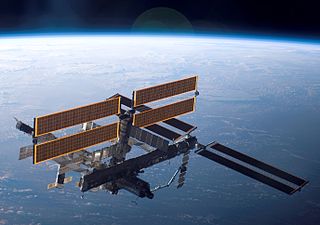
STS-115 was a Space Shuttle mission to the International Space Station (ISS) flown by Space ShuttleAtlantis. It was the first assembly mission to the ISS after the Columbia disaster, following the two successful Return to Flight missions, STS-114 and STS-121. STS-115 launched from LC-39B at the Kennedy Space Center on September 9, 2006, at 11:14:55 EDT.

Expedition 2 was the second long-duration spaceflight aboard the International Space Station, immediately following Expedition 1. Its three-person crew stayed aboard the station from March to August 2001. In addition to station maintenance, the crew assisted in several station assembly missions, welcomed the first space tourist Dennis Tito, and conducted some scientific experiments.

Soichi Noguchi is a Japanese aeronautical engineer and former JAXA astronaut. His first spaceflight was as a mission specialist aboard STS-114 on 26 July 2005 for NASA's first "return to flight" Space Shuttle mission after the Columbia disaster. He was also in space as part of the Soyuz TMA-17 crew and Expedition 22 to the International Space Station (ISS), returning to Earth on 2 June 2010. He is the sixth Japanese astronaut to fly in space, the fifth to fly on the Space Shuttle, and the first to fly on Crew Dragon.
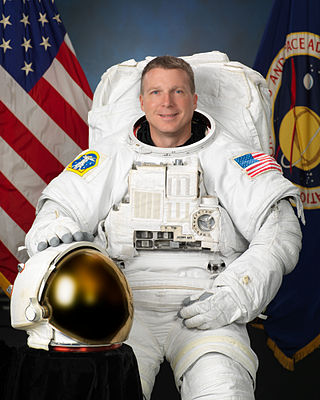
Terry W. Virts is a retired NASA astronaut, International Space Station Commander and colonel in the United States Air Force.
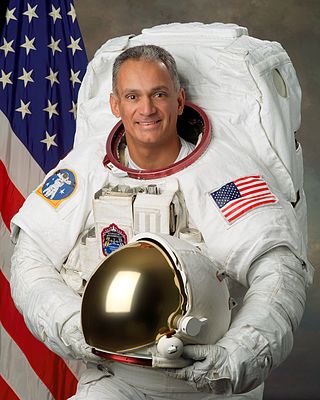
John Daniel "Danny" Olivas is an American engineer and a former NASA astronaut. Olivas has flown on two space shuttle missions, STS-117 and STS-128. He performed EVAs on both missions, totaling 34hrs 28min.

Nicole Marie Passonno Stott is an American engineer and a retired NASA astronaut. She served as a flight engineer on ISS Expedition 20 and Expedition 21 and was a mission specialist on STS-128 and STS-133. After 27 years of working at NASA, the space agency announced her retirement effective June 1, 2015. She is married to Christopher Stott, a Manx-born American space entrepreneur.
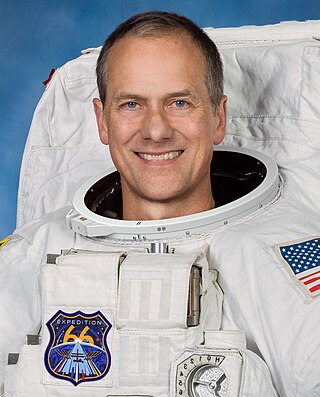
Thomas Henry Marshburn is an American physician and a former NASA astronaut. He is a veteran of three spaceflights to the International Space Station and holds the record for the oldest person to perform a spacewalk at 61 years old.

NASA Astronaut Group 16 was a group of 44 astronauts announced by NASA on May 1, 1996. The class was nicknamed "The Sardines" for being such a large class, humorously implying that their training sessions would be as tightly packed as sardines in a can. These 44 candidates compose the largest astronaut class to date. NASA selected so many candidates in preparation for the anticipated need for ISS crew members, along with regular shuttle needs. Nine of the 44 astronauts selected were from other countries including 5 from Europe and 2 from Canada and Japan.

Anton Nikolaevich Shkaplerov is a former Russian cosmonaut. He is a veteran of four spaceflights.

Expedition 23 was the 23rd long-duration mission to the International Space Station (ISS). Expedition 23 began with the Soyuz TMA-16 undocking on 18 March 2010. Shortly thereafter cosmonauts Aleksandr Skvortsov and Mikhail Korniyenko and astronaut Tracy Caldwell Dyson arrived at the Space Station on Soyuz TMA-18 on 4 April 2010. The Soyuz spacecraft lifted off from the Baikonur Cosmodrome at 00:04 EST on 2 April 2010.

Expedition 29 was the 29th long-duration expedition to the International Space Station (ISS). The expedition formally began on 16 September 2011, with the departure from the ISS of the Soyuz TMA-21 spacecraft. Astronauts Satoshi Furukawa, Michael Fossum and Sergey Volkov, who had arrived at the ISS aboard Soyuz TMA-02M in June 2011, began their Expedition 29 service at this time.

Soyuz TMA-22 was a crewed spaceflight to the International Space Station (ISS). TMA-22 was the 111th flight of a Soyuz spacecraft, and transported three members of the Expedition 29 crew to the ISS. The spacecraft docked to the ISS on 16 November 2011, and remained docked to serve as an emergency escape vehicle until its undocking on 27 April 2012. Soyuz TMA-22 successfully landed in Kazakhstan on 27 April 2012 11:45 GMT.
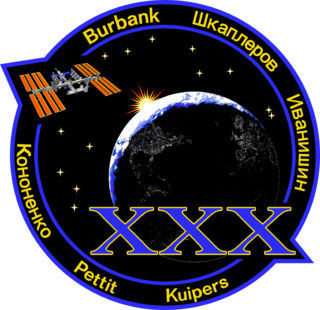
Expedition 30 was the 30th long-duration mission to the International Space Station (ISS). The expedition's first three crew members – Dan Burbank, Anton Shkaplerov and Anatoli Ivanishin – arrived on the ISS aboard Soyuz TMA-22 on 16 November 2011, during the last phase of Expedition 29. Expedition 30 formally began on 21 November 2011, with the departure from the ISS of the Soyuz TMA-02M spacecraft. The expedition ended on 27 April 2012, as Burbank, Shkaplerov and Ivanishin departed from the ISS aboard Soyuz TMA-22, marking the beginning of Expedition 31.
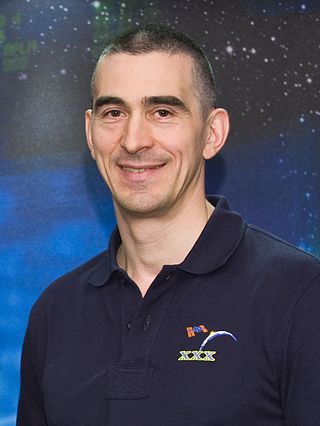
Anatoli Alekseyevich Ivanishin is a former Russian cosmonaut. His first visit to space was to the International Space Station on board the Soyuz TMA-22 spacecraft as an Expedition 29 / Expedition 30 crew member, launching in November 2011 and returning in April 2012. Ivanishin was the Commander of the International Space Station for Expedition 49.





















